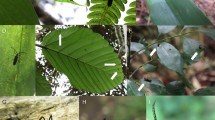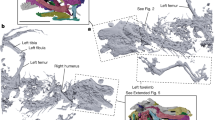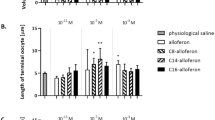Abstract
Puttarudriah and Channabasavanna1 state “…so far as we are aware, no reference occurs of an insect possessing antennæ with unequal number of joints [sic] on the two sides, affecting its bilateral symmetry”. In fact, antennal oligomery is a common phenomenon in the Heteropterous family Lygæidæ. Butler2 records its occurrence in twenty of the sixty-six British Lygæidæ known to him, and in certain genera, for example, Scolopostethus Fieber, it occurs frequently. However, I have reported3 examining 208 specimens of Ischnodemus sabuleti ssp. palustris Carayon (stated by Butler to exhibit oligomery) without finding an oligomerous individual. Butler does not include Heterogaster urticœ (F.) among the oligomerous species, but I have a male with normal 4-segmented left antenna and 3-segmented right antenna; this was the sole abnormal specimen in a catch of 75 of both sexes.
This is a preview of subscription content, access via your institution
Access options
Subscribe to this journal
Receive 51 print issues and online access
$199.00 per year
only $3.90 per issue
Buy this article
- Purchase on SpringerLink
- Instant access to full article PDF
Prices may be subject to local taxes which are calculated during checkout
Similar content being viewed by others
References
Puttarudriah, M., and Channabasavanna, G. P., Nature, 169, 378 (1952).
Butler, E. A., “A Biology of the British Hemiptera-Heteroptera” (Witherby, London, 1923).
Leston, D., Ent. Gaz., 2, 255 (1951).
Author information
Authors and Affiliations
Rights and permissions
About this article
Cite this article
LESTON, D. Antennal Oligomery in Heteroptera. Nature 169, 890 (1952). https://doi.org/10.1038/169890a0
Issue date:
DOI: https://doi.org/10.1038/169890a0
This article is cited by
-
Teratological cases of the antennae in the family Aradidae (Hemiptera: Heteroptera)
Scientific Reports (2020)



